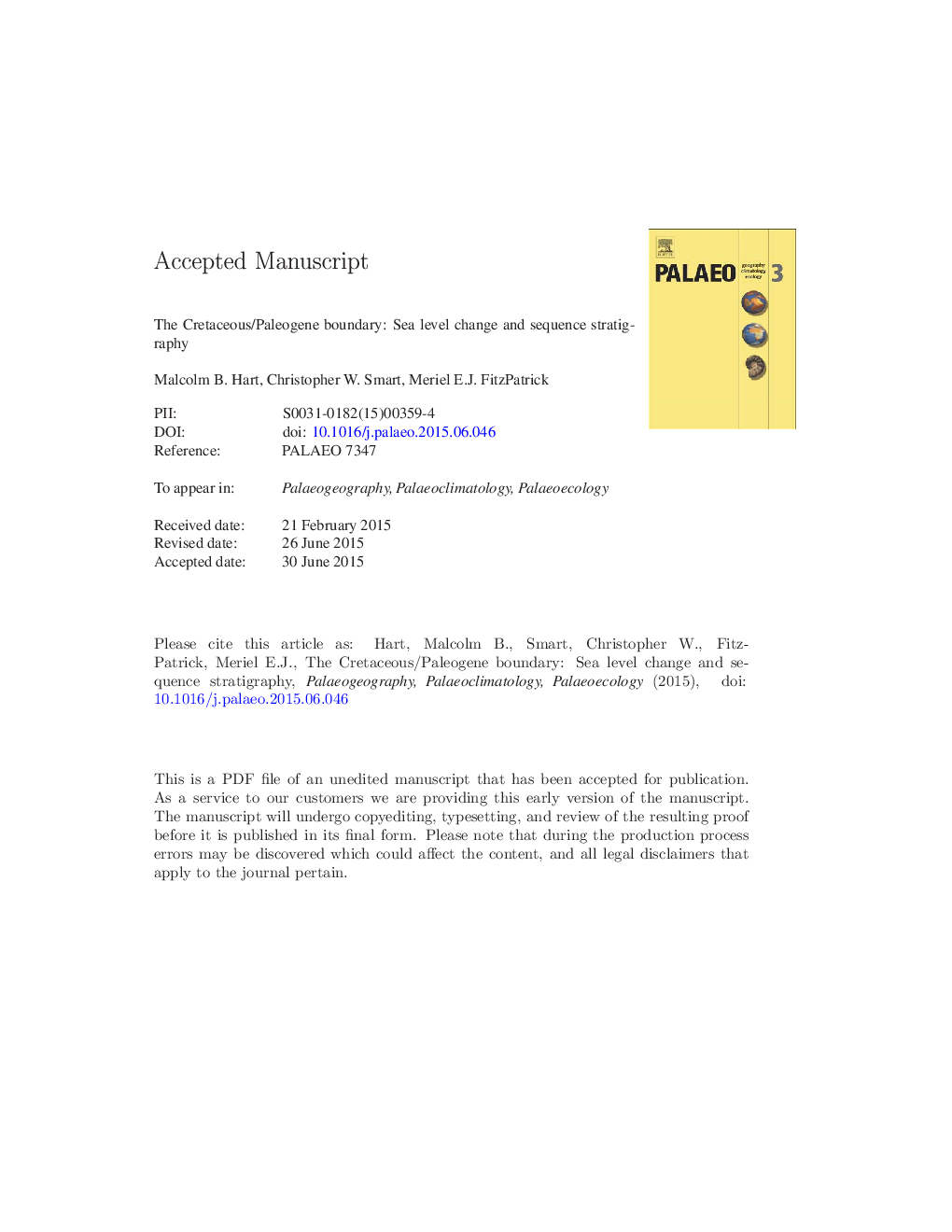| کد مقاله | کد نشریه | سال انتشار | مقاله انگلیسی | نسخه تمام متن |
|---|---|---|---|---|
| 6349460 | 1313957 | 2016 | 49 صفحه PDF | دانلود رایگان |
عنوان انگلیسی مقاله ISI
The Cretaceous/Paleogene boundary: Foraminifera, sea grasses, sea level change and sequence stratigraphy
ترجمه فارسی عنوان
مرز کرتاسه / پالوژن: فرامینیفرا، گیاهان دریایی، تغییر سطح دریا و چینه شناسی دنباله
دانلود مقاله + سفارش ترجمه
دانلود مقاله ISI انگلیسی
رایگان برای ایرانیان
کلمات کلیدی
تغییر سطح دریا، فرامینیفر، چمن دریایی، ماستریخت، استونز کلینت، رود برازو،
موضوعات مرتبط
مهندسی و علوم پایه
علوم زمین و سیارات
فرآیندهای سطح زمین
چکیده انگلیسی
The tsunami generated by the Chicxulub impact eroded the uppermost Cretaceous surface of the Gulf Coast region (U.S.A.) forming a distinctive topography that was previously interpreted as a sequence boundary. At more distal sites, such as Stevns Klint (Denmark), there appears to be no sequence boundary at the Cretaceous/Paleogene boundary but there is one within the uppermost Maastrichtian, between the Sigerslev and Højerup members, and another in the lowermost Paleocene (top of Zone P1a). Both of these surfaces are identified by distinctive, phosphatized, and incipient hardgrounds. The changes in sea level involved in the generation of uppermost Cretaceous sequences are thought to have been minimal as, in the Gulpen and Maastricht formations of the Maastricht area (Netherlands), the presence of sea grasses and their associated foraminifera would indicate that the chalk sea floor remained within the range of water depth that would allow photosynthesis (< 20 m), even across the postulated sequence boundaries. The assemblages of foraminifera associated with sea grasses in the uppermost Maastrichtian are comparable in morphology with those associated with modern sea grass meadows and indicate a relationship that may have existed since, at least, the latest Cretaceous.
ناشر
Database: Elsevier - ScienceDirect (ساینس دایرکت)
Journal: Palaeogeography, Palaeoclimatology, Palaeoecology - Volume 441, Part 3, 1 January 2016, Pages 420-429
Journal: Palaeogeography, Palaeoclimatology, Palaeoecology - Volume 441, Part 3, 1 January 2016, Pages 420-429
نویسندگان
Malcolm B. Hart, Meriel E.J. FitzPatrick, Christopher W. Smart,
